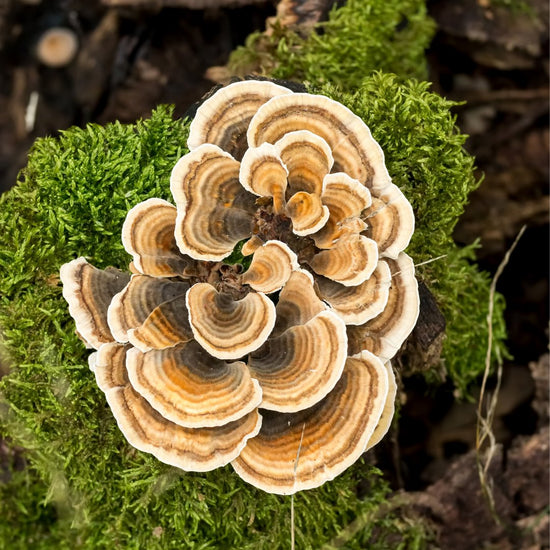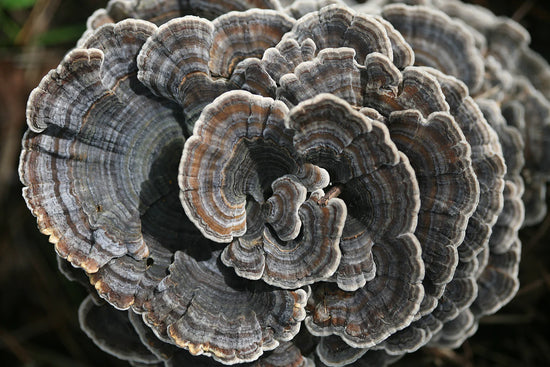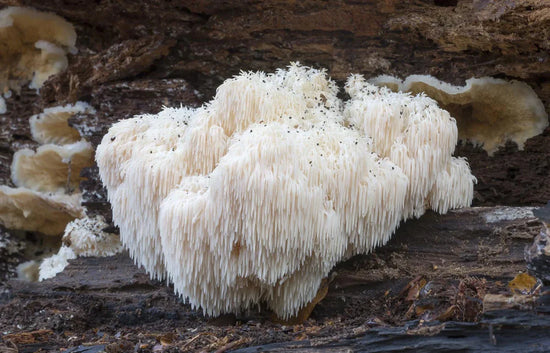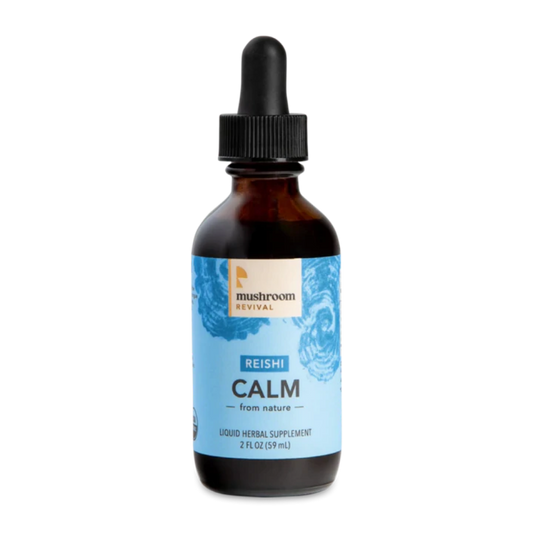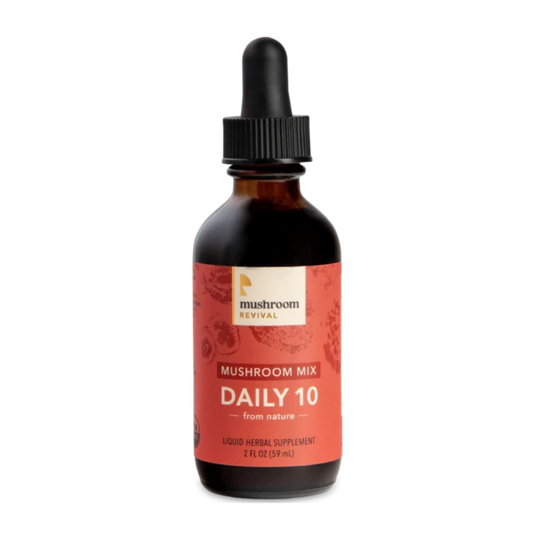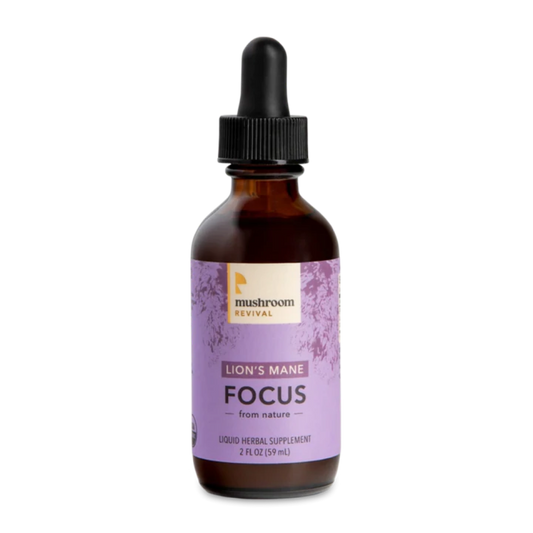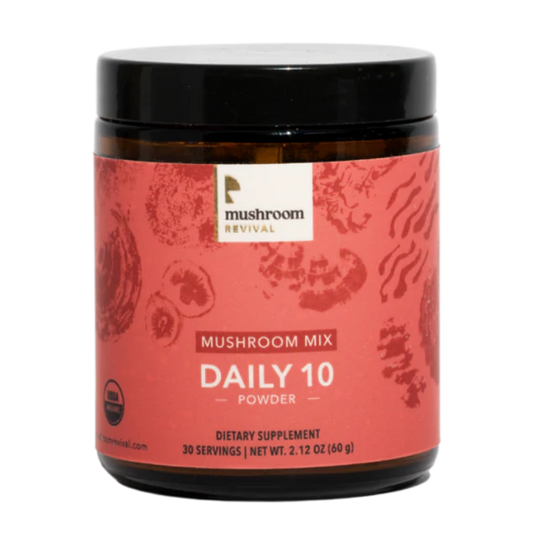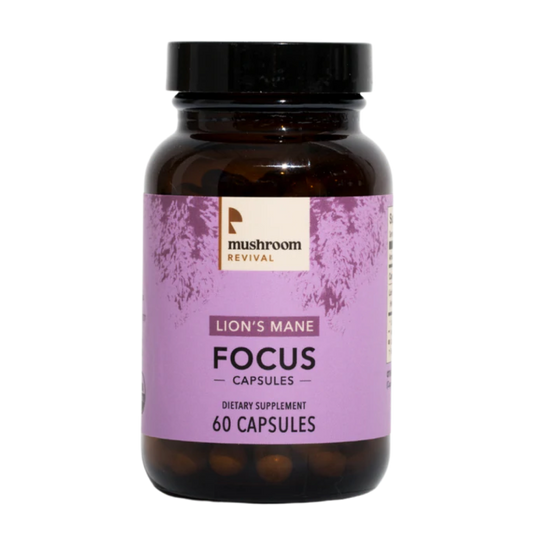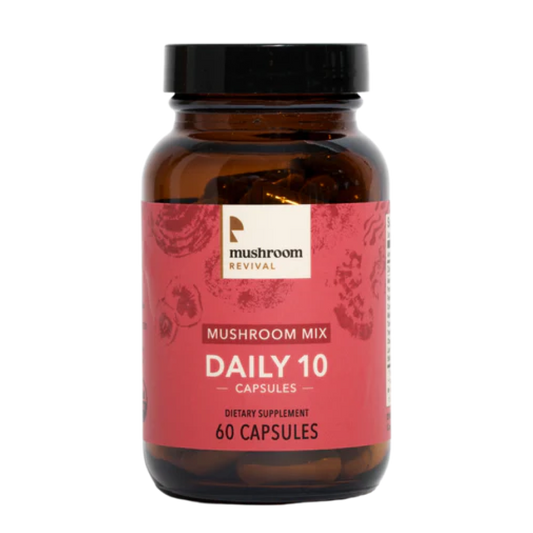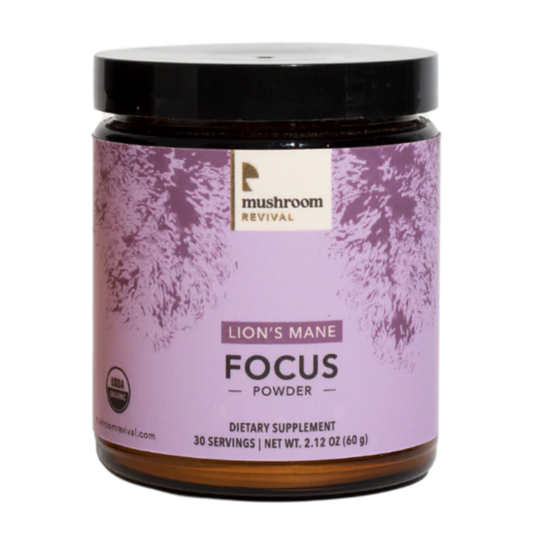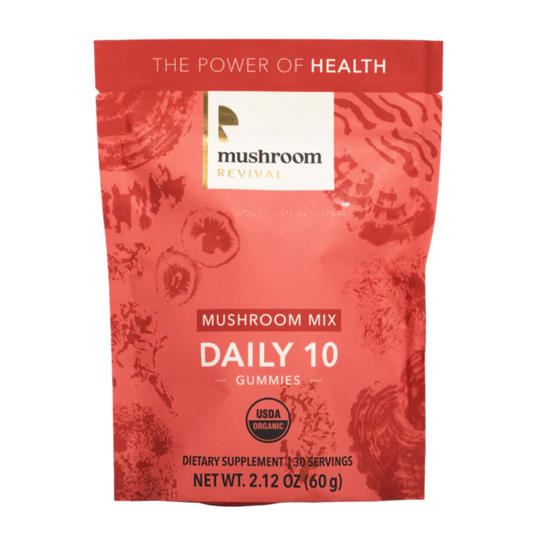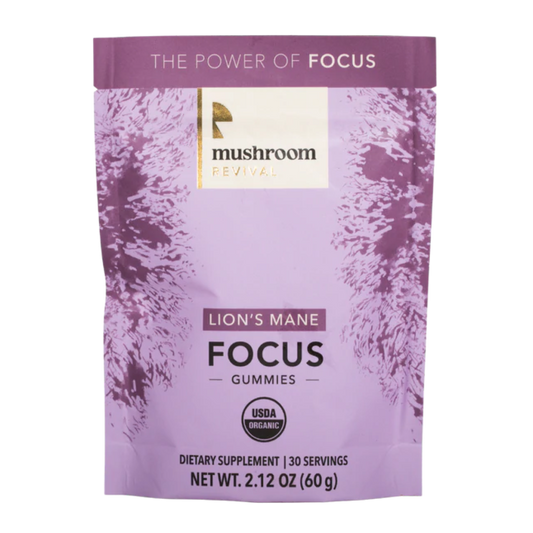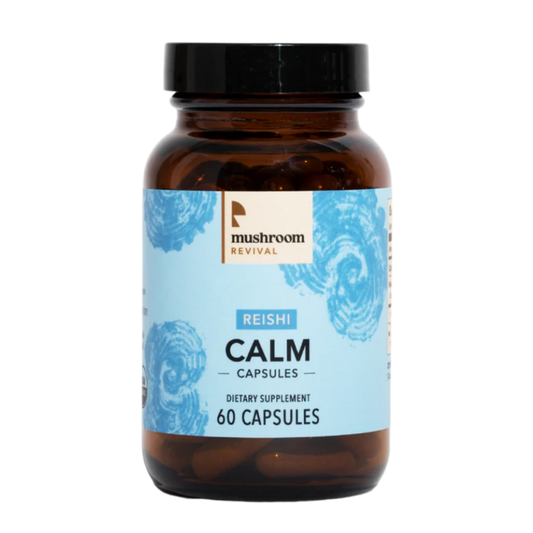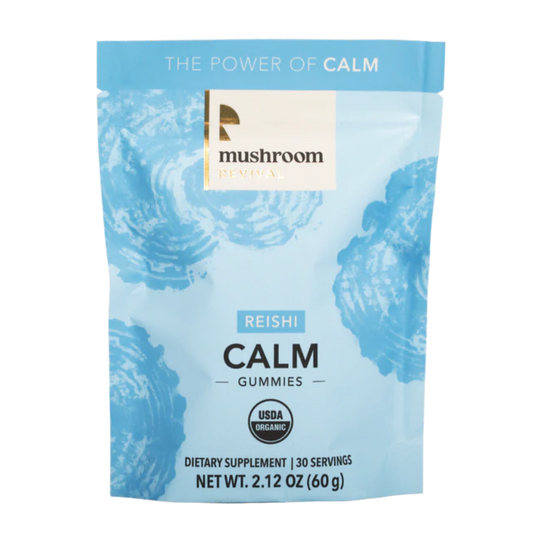Kew's Fungarium: The World's Largest Collection of Fungi
Over one million specimens of fungi share a space known as the Fungarium at the Royal Botanic Gardens, Kew. It is the largest collection of dried fungi in the world with specimens as old as the 1700s.
Today we welcome lead mycologist Tuula Niskanen, and Fungarium curator Lee Davies to spotlight this important collection. We discuss when, where, why, and how fungi from all over the world are collected, studied and preserved.
Topics Covered:
- How the Kew Fungarium is curated and maintained
- The value and importance of saving physical specimens
- Shelf life and preservation methods of fungi in the form of spores, mycelium and fruiting bodies
- Specimen highlights
- The Kew Gardens State of the World’s Fungi Report
- How citizen science can help and benefit from Kew


Show notes:
Access the Fungarium: https://herbtrack.science.kew.org/search
IMI database: http://www.herbimi.info/herbimi/home.htm
Beyond the Gardens short virtual tour: https://www.youtube.com/watch?v=g9HitGBVlIY
State of The World’s Fungi: https://stateoftheworldsfungi.org/
Ophiocordyceps taylorii photo: https://drive.google.com/file/d/1tBG__EwAt-vH1kjI2qAbxckRJovJPBAv/view?usp=sharing
Hongos de Patagonia: https://www.youtube.com/watch?v=yya-bvYTSas
TRANSCRIPT
You're listening to the mushroom revival podcast.
Lera 0:06
Over one and a quarter million fungal specimens share a space known as the Fungarium at the Royal Botanic Gardens Kew. It is the largest collection of Dr. fungi in the world with specimens dating as far back as the 1700s. It's comparable to a global seedbank, but for fungal tissue. And today, we welcome to have the mycologists on the team who run the show and help make this epic collection possible.
Tuula 0:38
I'm Tuula Niskanen. I'm a researcher and I work in Royal Botanic Gardens, Kew in London. And I studied fungal diversity. And basically, I'm interested in knowing which funghi occur in in the world and where they occur in the world. And I also describe new species to science. And why I am interested in funghi is that without funghi, we would not really exist.
Lee 1:10
My name is Lee Davies, and I am one of the curators here at Q's fungi area. My job is is a bit like a librarian, I guess. So I make sure that the collections are available for researchers to use everything from looking at biochemistry up to the genetics of funghi. a fun game as a whole is is a huge and important resource for fungal science. Because of the the taxonomic range and the historical breadth of the collections that we have.
Tuula 1:39
It's basically a collective memory of biodiversity that has been collected in there.
Lera 1:47
So today on the show, we are getting archival when, where, why and how our fungi from all over the world collected, studied and preserved.
Tuula 2:05
There are of course, other Fangoria in the world. But it's a very historical collection, and has many very valuable parts in it. And for example, it includes 50,000 type specimens of funghi.
Lera 2:20
So type specimens, these are specimens that essentially define a species they are the original materials used to link a fungus and the name it was given by taxonomists. Q has a particularly impressive collection of these type specimens. And with current DNA technologies, nearly all of the dried fungi can be sequenced to further genetics research. And for those who don't know, what's the importance of a Hungarian is, is there a reason why you need the dry specimens? And not just pictures? I mean, what are the the different uses of of a Hungarian?
Tuula 2:56
A good question? So yes, we want to have the specimens, because if you would have a photograph, and later on, it would be revealed. And there are several species that look alike, you wouldn't be able to tell from the photo, which species that is, so you need something physical, and also the physical specimens, they also store the genomes of funghi. So with the current methods, we are able to read quite a lot of the genetic code of the species, even from the very old Hungarian specimens.
Lera 3:34
Are there any instances where you have a specimen that you can't derive any genetic information? And what do you do in that instance?
Tuula 3:42
Yes, there are cases when we are not able to extract any DNA or it has been chopped in so small species, that it's not useful anymore. So then we can't have the genetic information. But still, we have the morphological information. So at least we have the dried mushroom, or if it's a small cup fungus, for example, we have that one. So it's still enough for morphological studies, to use that, for example, to how they differ from other species that have been found. And there are also other uses. So it's, it's also a historical memory. So, if certain species are collected at a certain time of the history, let's say during the general Nobel accident or species quality before that, or after that, and there was a lot of radiation, some of that radiation was also what it went to the funghi that are mushrooms. So, you can see kind of the effect of the Chernobyl from these dried funghi that have been collected before the accident and after the accident. So these are this is for example in the other type of use for funghi. or there might be cases when you need a certain substance from funghi whether it will be something related That they are toxic, or they have some other characteristics. So you can have mushroom specimens, and you can try to extract the substances from the dried funghi.
Lera 5:12
So I'm curious when you allow researchers to come into the fungi area, who are these people are they pharmacologist looking for new species of fungi to investigate their chemical compounds or curious mycologist ecologists who who tends to come through your doors and why
Tuula 5:30
mostly, they are other taxonomies. So people who are interested in studying which funghi occur in the world and how they are related to one another. So that's the main bulk of visitors. But of course, there are some who are, as you mentioned, interested in their ecology or their chemistry. So all kinds of visitors and also artists want to come there just to see like, what kind of funghi there are, and historians to see kind of the history. And, of course, Frank Gehry Mills also linked to the to the arts Library and Archives that we have in queue, which stores a lot of the literature, the paintings, and that type of information. So it's used by many different types of people. And of course, students as well.
Lera 6:27
Anyone who is interested can visit the Hungarian and upon request, they will prepare a sample of a given specimen to support researchers. So under what circumstances are they pulled from the archives, who's asking for them, and why
Lee 6:40
usually, we're really, very open to the idea of people using the collections, especially when it comes to what gets termed destructive sampling. So taking pieces of a specimen, grinding it up, and you know, getting the DNA out of it or looking at the biochemistry of it. So normally, if a researcher contacted us and said, I'd like to borrow this specimen for DNA work, especially if it hasn't been looked at before. for those purposes, we will almost always say yes, because the real value in the collection is the data that we get associated with a specimen. And sometimes getting that data means destroying a part of a specimen. Luckily, if someone's doing genomics work, they might take out a piece of the gills, you know, a few millimeters in square for instance. So it's not always the whole thing that gets destroyed, it's a small piece. And as long as we get that data back, that's adding value to the specimen if you're like,
Lera 7:41
the majority of specimens are preserved by simply drying them, no special tricks. Although ideally the specimens are collected and dried as soon as possible. You can do this with a standard food dehydrator set no higher than 40 degrees Celsius or 140 Fahrenheit to preserve the DNA, once they've been completely dried, they go into envelopes with their respective information and are filed away next to their sister taxa.
Unknown Speaker 8:07
We do have a relatively small collection that's preserved in spirit, which I think is there's a little bit of formaldehyde and ethanol in it for funghi that are quite interesting, three dimensionally, like some of the sting corns, for instance. But I think that's, you know, a few 1000 specimens are stored like that, but everything else, you know, 1.1 and a quarter million, they're dried, that's all we do, it seems that drying is all is completely necessary, as long as you then store them in an environment which is kept stable, and cool. And the humidity needs to be sort of 50 50%. And that sort of is all that's required. I mean, we have, that's as far as we can tell, that is all you need to do. And that will keep them usable for potentially centuries, we've got stuff here that's well over 100 years old, that was bride, probably more poorly dried and things would be now but we can still get useful DNA out of it. For instance, we had someone doing some research and looking at genome sequencing for British funghi. And there seems to be a strong correlation between usable DNA collected in the past from funghi. In the past, say 20 years, there's a strong correlation between how quickly and efficiently it was dried out by the person who collected it and how well we were able to get DNA out of it. So I think it's easy, you know, you get a good person who dries it quickly, not too hot, and then you keep it in good conditions. And it will it seems to be centuries is what we're looking at.
Tuula 9:36
For funghi. We have two very big rooms full of these cupboards where you can store specimens and also they are monitoring for example pests so that nothing gets wild there and starts to eat the funghi mostly in the fungi area, you will find mushroom forming funghi so something you can see with your bare eye. However, we all So have pathogenic funghi. So for example rusts, and smarts that are growing on the leaves on the flowers, so part of our collections are also dried plants. So plants with these funghi. So you can finally see these arcs, and paper arcs where you can see the pressed plant. And on top of those plant leaves, for example, you have a fungus in a queue, we have don't have those cells so much, but an other option is also to store a culture. So if you have a very teeny tiny fungus, well, teeny tiny in the sense that it forms a teeny, tiny mushroom. And it's hard to preserve like that you can culture it, and then you can store the mycelium in minus 80. And then that's the way to store the fungus.
Alex 10:56
And I'm guessing these are organized in a special way. And is it alphabetical? Are you you know, organising it by basidiomycota ascomycota, then, you know, you have a coronary section over here, you have a quarter sub section over here, you know, how is this organized?
Tuula 11:15
Usually, as you mentioned, it's organized by taxonomical order. So, coronaries is in one place, Rose slightly is in one place, there is also a bit of a geographical organization. So one room is dedicated to funghi, collected from the UK, and then the room is for the funghi collected from other parts of the world. And within these two rooms, then inside those they are in taxonomical order. However, this is now tricky because not all of the collections are digitized yet, because it's a huge work to put or to capture all the data and put it available online. So only half of the specimens are currently digitized, and half of them are not. So all. So six, about 600,000 specimens are still not digitized. And when the arrangement is like this, if you would ask me, how many specimens Do we have from Congo, of how many specimens Do we have, for example, from South American country like Bolivia, I wouldn't be able to answer you at the moment. Because that kind of country information is not something you can search by just going to the coppers, but you would need to capture First, the label data, have it online, and then be able to search for it. And this is, of course, a problem. And it has been recognized. And one of the top priorities in queue is to basically get all of the data online searchable, so that the collections would be the most useful for everyone.
Alex 12:55
That is such a massive feat with with so many different, you know, species and collections. And I was reading that you, you have collected fungi from over 240 countries on all seven continents. I was looking it up because I was wondering how many countries there were. And according to ISO country code standard, there are 249 countries in the world. 194 of them are independent. So it seems you're missing about nine countries to collect fungi from Do you know, do you have a bucket list of countries that you haven't collected fungi from that you're dying to go to an expedition from or, or get people to send fungi from that certain country?
Tuula 13:41
So we have don't have that yet. And as I mentioned, since we don't know exactly where all of our collections are from, this is a sophisticated guests at the moment of how many come from how many counts? Well, at least we know from how many countries we have, which are digitized, but there might be some more in those that are not right yet. But yes, that would be really awesome to know is like whole only five countries lacking anymore. So let's go hunting. Right, right, right. Yes, of course that would be really fun. Yes, but of course there is also a division between different fungi area in the world. So usually if you have a Hungarian in in the country, you want to store the specimens from your own country, the species that are collected from your own country. So that's kind of usually the main thing people are focused on on having materials. And then there are you want to have from different parts of the world where the researchers from your institute are working. So usually it's it's kind of a combination of of of course national things and then what we are interested in internationally but since q has such a life network and people have been working in many different parts of the world. Plus people have been sending materials from different parts of the world to Q. So yes, that's a very amazing an impressive collection of funghi from all around the world. And since not all of them are studied yet, there are also many new species to science, even new genera, and your family's desires that are stored there. And they are just waiting for someone to discover them.
Alex 15:27
So almost 2000 species actually 1886 species of fungi were scientifically named for the first time in 2019. I don't have any stats for 2020, does this number keep going up? Is this really high for this year? I'm just curious to statistically on how many new fungi we're finding each year.
Tuula 15:51
So this figure comes from the state of the world's plant and funghi report. And this is a very important report. In 2018, we did the first one concentrated only on funghi. And we it was it was the first alike. And it was done, led by q but done in cooperation with the researchers worldwide. And that report got a lot of attention. For example, in the UK, it was more in more than 150 articles were written about it in the papers, and it was estimated that maybe 70% of the UK adults got some information about this report. So this Yeah, so this, this kind of the report, it aims to give a summary information of what is our current state of knowledge and fungal diversity, about the importance of funghi in the nature, what are the uses of funghi? What are the threats of funghi, and what kind of actions we are taking to maintain the fungal diversity and its sustainable use. So one part of this report was this new species that I was writing together with my colleagues, and yes, 2000 species per year, approximately or a bit more 2500 are described yearly. And that has been quite stable for the last five years. But before that, it was less. And the main reason is the invention of molecular methods. So, in funghi, they are quite hard to study, they most of their time, they live under the ground as high fee and just uncertain times they form these mushrooms, or they don't form them at all. And characters that we can use to differentiate between different species are few, and there hasn't been that many researchers. Also, the number of fungus is really big. So it's seven times more than the flowering plants. And most of the funghi are still unknown 90% of the species are still undescribed. So taking all of these things together, the fungal species are poorly known. And when the monochrome methods were invented, they allowed us follow up better to see how fungus would be classified. So we started defined, not fine, but they may recognize the true diversity of funghi. And also, then the number of species that we describe per year started to rise. Currently, yes, we are doing these 2000 2500 per year, which sounds quite a lot like oberhalb so many new species are found per year, but with the current speed, it will take us 1000 years, they hope before we have described all the remaining ones. And yes, there are funghi that are important for us, in industry. So 60 percentage of the enzymes that are used in industry come from funghi. And they're also medicines that come from funghi penicillin that is used to treat bacterial infections. And also there are medicines for the multiple sclerosis and to treat high cholesterol. So, there are many different kinds of things we can get from funghi. And since they like to break down things, what what is really hot and pop and what has been kind of been highlighted lately is that funghi can also break down plus plastic. So this can so basically funghi as we know more about them, they can probably well they already have and they will change our lives. But they may even save our lives. And by giving them a name, we basically recognize them. And because without a name, they will go unnoticed, although they have these very, very important functions in the nature and also benefits for us humans.
Alex 20:20
Do you do any of that research at the fungi? arium? Do you do chemical analysis to figure out any functional compounds or, you know, do analysis of the enzymes for Mike remediation purposes or anything like that textile analysis? Or do you send these to third party companies that can do that sort of analysis on all these new species.
Tuula 20:45
We don't do that much in queue. So most of our work is focused on the classification of funghi. So basically, producing the framework and tools for the others to then go further with fungus. So we produce the classification, we recognize how they are related to one another, but then also we study their function in nature, and in to some extent, the use as well. But the main function, kind of the main purpose of queue is to study the biodiversity and produce the kind of the baseline knowledge of the importance of funghi.
Lera 21:30
This room boom is here, fungal innovation in tech, medicine, fashion, therapy, and engineering are at an all time high. And compared to the 10s of 1000s of species at the fungi area. We estimate that a few 100 at best are currently showing up in research and development. And the fungi that are being investigated have already proved their profound potentials for a better future. And if we're barely using 1% of what we do know is out there, we are looking at a colossal selection of fungal partners. The fungi area is here for us and here for you with over a million specimens and approximately 70,000 species myco curious minds like you have this truly epic resource. What are some extra special specimens that q you ask? Well, while we agree that they are all important, we asked leave one of the curators at cue to describe specimens that are particularly memorable or hold some kind of superlative record,
Lee 22:32
the smallest specimen of the finger. And we have we have quite a lot of small, small specimens. There's a whole group of funghi that are unicellular, so a single cell. So for instance, things called kit threads, which are ecologically important that people might in a way that people are aware of because these are pathogenic on amphibians. So there's been a lot of press over the past decade or two about Kittredge funghi killing off amphibians. And we have we have a collection of catered funghi. So those are a few 10s of microns across if you like, these are microscopic slides that we have with miniscule little microscopic funghi on them. The largest specimen I have is it's a bracket fungus. So this is a these are wood eating specialists. And they form these sorts of bracket or plate like fruiting bodies that come out of the sides of trees or rotting logs. The biggest one I have is like half, you know, it's about half a circles worth and it's about two and a half feet across. I think it's an iron. And notice that's about two and a half feet across.
Lera 23:40
So are there any specimens that you particularly find memorable? Like if you were giving a tour and you wanted someone to be over the moon about what you have going on in the fun game? What would you show them?
Lee 23:52
So there's one specimen I always get out if I've got tours and what have you going on. It's a fungus that's called opo corcept Taylor I so it's a it's a parasite. It's a parasite of caterpillars. It's a specimen we've got this particular one. It's about 150 years old, and it comes from Australia. And it's a first of all, it's a caterpillar that's all dried up but the caterpillar itself is bigger than say your middle finger it you know it's a good three or four inches long. It's a big fat, juicy caterpillar. But it's been parasitized parasitized by this fungus and the fruiting body growing out of the caterpillar itself is about eight nine inches long and is quite chunky looking mushroom, which is this really big, substantial mushroom type thing. It's really gross, but people get really freaked out and horrified is great one to use. It's enormous. I mean we haven't we have a lot of entomopathogenic funghi but they're all very small. We've got thing we've got quite a lot of gonio here as well. But at the end of the day, you know they'll be an inch or two long this sort of slimmer their pencil. But this thing is this paler I've got is yes oh colossal. It's really chunky and grotesque.
Lera 25:03
If you'd like to see photos of this monster quadriceps, be sure to check the show notes. It's delightfully morbid.
Lee 25:09
We have this Oh, this one we call a squid fungus. That is usually pretty nifty. So there's a, there's a whole group of funghi that are we called the stink horns. They're named the foul AC. And they produce really unusual mushrooms. They've kind of gone beyond the normal, mushroom shaped type fruiting body and they produce things. You know, they look the stink horns, they look like penises. They look like geodesic spheres. There's one there's one particularly squid fungus, it looks like an octopus or squid emerging out the ground. And they all stink. They all produce these guns called gleyber that smells of rotting meat and poo. And they use insects to disperse their spores rather than the normal sort of wind and air dispersal mechanisms of almost all other funghi. It looks gross it is, it's a great thing to whip out and show people.
Lera 26:04
And not only does the Kew Gardens have the most impressive collection of specimens, but I read that your psychological library is one of the most extensive of taxonomic literature on fungi in the world. You've got books, periodicals, offerings, and so many other things. Can you talk about this collection of literature is are you continuing to look for more things to add? Are you personally writing anything? Or is the queue writing any books to kind of wrap it all up? I mean, what, what work is being done on the literary side of this,
Tuula 26:38
we still keep collecting literature, bullet journals, and then books, they can be books for public or more for identification. But yes, it's still an important part of Cqs library work to collect literature. Especially when it comes to the books, they are usually not available online. So having them physically, it's really an asset. And I have to admit that before I came to Q, I had difficulties to obtain literature or to be especially in taxonomy where you can have like 200 years old books that we would need to access and there are only a couple of copies of them existing in the world. So when I came to Q, obviously, really like, wow, this is like a treasure for me, because everything is just like they're available for you, all the history, the memory, and all the information. So yes, it's really important still to have a place where, where you can really physically have all knowledge and literature gathered in one place.
Alex 27:59
And it was I was just chatting with Juliana Ferrucci, who is an incredible woman. And she's, you know, one of my dear friends, and she told me that she knows you and has traveled to Chile with you many times. And actually, you guys both described a new cart, coronary species together. Is that right?
Tuula 28:23
Yes, that's correct. And it was a really, really beautiful one, because it's green. Most of the coronary species are brown, and plus most Brown, so they are not that fancy looking once but this was green. So Juliana was like, I have a species here and it's green. And she was taking a photograph. And she was like, Oh, this must be something very, very exciting. And it took a couple of years to study the taxonomy. But yes, it turns out to be a new species to cite science, and we decided to name it. Cora denarius, Cora, splendid was so caught up referring to green and spend it as like a splendid appearance it had. So it's not a very cute big one. So it's about the height of my fingers, and the cubbies, maybe three, four centimeters wide, but the color, the green color that was really striking and exotic.
Alex 29:27
Juliana called you the queen of court Nereus, and, you know, he she wanted me to ask you about the old classification of coronary is based on how viscid the cap Stipe or both was, it seems like there was a an old way to classify a coronary is that that's pretty interesting.
Tuula 29:47
Yes. All right. Always when you're trying to classify things you try to select characteristics that would be easy to use and encourage scenarios. The slime Enos of the cap, and that, like how the mushroom forms, does it first open the cap, and then this type elongates or does it first elongate this type, and then the cap opens, these type of characteristics were used to put court in areas in different general or sub general. And after we started to use molecular methods, we realized that not all of these classifications were natural, so they were not really reflecting the relatedness of the species in reality. And now we are revising the classification of core scenarios. However, to some extent, these still hold so of course, the more closely related the species are, the more similar they are. So some of the characters we had selected before the monochrome era to be used for the classification still hold but some of them we need to revise and look for other characters that might better reflect the natural classification of this funky but I think the the slime slime Enos is is one thing that is kind of people probably like it, because it's, it's something you can easily observe is like is kept slimy or not some of the Coronavirus species are slow, so slippery, slimy, that they they are even almost hard to pick up. So that that's one good thing and then the color. So like, obvious things, because there are species that are red, yellowish. And, and these green is colors. So they were more like classified as the one group. And then there were more of these, which are darker colored ones. So yes, in the beginning, we tended to use things that were easy to observe and easy to use for classification. And yeah, maybe I can tell one thing more what we use in color, denarius, some of the spaces in call scenarios, they are very accurate, or kind of, don't taste really nice. And you can already by licking the cap, you can feel this accurateness and one of the core groups of cardinalities is called vibrato less. So I used to say to the people that you can recognize it so that you lick the cap, and then it makes you vibrate. And that's
Alex 32:40
I love how many different ways there are to you know, suddenly ID a mushroom from you know, the slime Enos to the the taste to even you know, the smell. And this has me thinking if you have this many dried specimens and the Hungarian, when you walk into you get hit by this, you know, is it just this waft of dried mushrooms smell? I mean, is it really earthy in there? Or can you smell it at all, if they're all you know, sealed in drawers.
Tuula 33:13
You don't really smell that because they have been packed. So since they are in these envelopes, and usually within the envelopes there are in these small bags. And then these are again in a cupboard, in the boxes and then in the cupboards. So you can't really smell that much when you go into the Hungarian. However, in some occasions when you open the box, and then you take the specimens out. Some fungus still have the smell left. But when you go into the Hungarian No, it's not. Not earthy or anything it just right, more or more like a normal room. But yes, I wanted to add one thing to the previous question. Of course tasting funghi don't ever taste a fungus unless you know which basis that is. So for example, in God denarius, there is one lineage where there are deadly poisonous species. So never ever, like taste, or bite a fungus unless you know what it is.
Lera 34:27
So what advice do you have a favorite coronaria species?
Tuula 34:33
These is a tough question. I'm thinking like once God in ours would make me the most happy if I would find it. Yeah, so there are different ways of approaching this. One way would be this, like, which one would I most likely want to see there is for example, this kind of this coordinate is called Gordon arrows in xpect datos And I have never seen it in nature. It's It's said that it's usually growing in spring or early summer. And when I started to study gardeners over 20 years ago, I had a garden arios flora, or this kind of an identification book, and this piece is was in there. So of course, you always think that if a species is in a book, it's something you can find. So, this species is still in my to be found list. So most of the other ones, if not all, I have already discovered found myself but this got a denarius in expected those that's still hiding from me. So that would be really nice to see.
Alex 35:47
And I'm sure you have such an interesting perspective on the whole mycology world. I know CT Nereus is is your bread and butter. But you know, working at the Kew Gardens and seeing the Hungarian and all these different species in one place. It really gives you a 10,000 feet perspective, so to speak on on all fungi in the world. So I'm curious, what what would you like to see in the mycological? world? What what sort of research what sort of advancements besides finding that one coordinate areas, you know, what, what would you like to see done or found discovered, etc. Um,
Tuula 36:29
I will choose the one that is closest to me. So what I would personally want to achieve is a pipeline where I could easily describe a fungal species, and simultaneously an identification database would be created, that then would be possible to use by anyone who wants to re identify that species, I think the modern technology already would allow us to do that. And that if, if, if that could be achieved, and I wouldn't be able to deliver my knowledge with just one push of a button to anyone in the world. That's my dream, because that that would be super cool. Because there are so so many funghi to be found, and things that we would need to know about them. So the more easily I would be able to deliver my knowledge to anyone else, the better it would be to basically stop the biodiversity loss. And then to help people to study the many, many important things that funghi do in the nature and how important they are to us.
Lera 37:53
I think the work that you guys are doing is unbelievable. I'm I'm super inspired and odd at at the work that everyone involved that IQ garden is, is doing so so thank you also want to tell our listeners about the state of the world report that you put out, the trend seems to be every two years, Kew Gardens releases a report on contemporary applications and understanding of fungi. And this was one of the more satisfying and comprehensive reads that I've come across on this topic. So thank you, thank you to Q and the 97 other institutions that collaborate on it, I will have links in the show notes for those of you who are interested in want to check it out. And to like if there is anything else that you want to share with us about your work or how we can support you. We welcome that fully.
Tuula 38:49
Maybe I would say to anyone who is listening to this, I hope you will be excited about the wonderful world of funghi. And if you want to get more involved, look, the local mushroom clubs. So for example, in North America, the North American Mike logical Association, or in the UK, the British Psychological Association, and then under those are the local clubs, get involved get with get together with other people who are interested in funghi start to learn more about them. And then you might be part of the change and maybe help the future research by being a citizen scientist or a field mycologist maybe as we talked just while ago, mapping funghi that are red listed mapping funghi for conservation for ecology for our increasing our understanding of fungal world
Lera 39:55
thanks to Lee and to the and the whole team at the Hungarian for building a super badass resource. And thank you listeners for tuning in and chiming in and making this coverage possible.
Alex 40:08
You can support the show and keep content like this coming by visiting our website, mushroom revival, calm and purchasing any of our products. And if you are a listener, which you are by listening right now, you get a special discount for 10% off. Just enter m our podcast at checkout. That's all capital letters m our podcast at checkout. Please keep spreading the spores tell all your friends, your family, your co workers, everybody about mushrooms the show and how they can form a sacred relationship with fungi. And as always, much love and may the spores be with you.








